Jianming Liang
Foundation X: Integrating Classification, Localization, and Segmentation through Lock-Release Pretraining Strategy for Chest X-ray Analysis
Mar 12, 2025Abstract:Developing robust and versatile deep-learning models is essential for enhancing diagnostic accuracy and guiding clinical interventions in medical imaging, but it requires a large amount of annotated data. The advancement of deep learning has facilitated the creation of numerous medical datasets with diverse expert-level annotations. Aggregating these datasets can maximize data utilization and address the inadequacy of labeled data. However, the heterogeneity of expert-level annotations across tasks such as classification, localization, and segmentation presents a significant challenge for learning from these datasets. To this end, we introduce nFoundation X, an end-to-end framework that utilizes diverse expert-level annotations from numerous public datasets to train a foundation model capable of multiple tasks including classification, localization, and segmentation. To address the challenges of annotation and task heterogeneity, we propose a Lock-Release pretraining strategy to enhance the cyclic learning from multiple datasets, combined with the student-teacher learning paradigm, ensuring the model retains general knowledge for all tasks while preventing overfitting to any single task. To demonstrate the effectiveness of Foundation X, we trained a model using 11 chest X-ray datasets, covering annotations for classification, localization, and segmentation tasks. Our experimental results show that Foundation X achieves notable performance gains through extensive annotation utilization, excels in cross-dataset and cross-task learning, and further enhances performance in organ localization and segmentation tasks. All code and pretrained models are publicly accessible at https://github.com/jlianglab/Foundation_X.
ACE: Anatomically Consistent Embeddings in Composition and Decomposition
Jan 17, 2025Abstract:Medical images acquired from standardized protocols show consistent macroscopic or microscopic anatomical structures, and these structures consist of composable/decomposable organs and tissues, but existing self-supervised learning (SSL) methods do not appreciate such composable/decomposable structure attributes inherent to medical images. To overcome this limitation, this paper introduces a novel SSL approach called ACE to learn anatomically consistent embedding via composition and decomposition with two key branches: (1) global consistency, capturing discriminative macro-structures via extracting global features; (2) local consistency, learning fine-grained anatomical details from composable/decomposable patch features via corresponding matrix matching. Experimental results across 6 datasets 2 backbones, evaluated in few-shot learning, fine-tuning, and property analysis, show ACE's superior robustness, transferability, and clinical potential. The innovations of our ACE lie in grid-wise image cropping, leveraging the intrinsic properties of compositionality and decompositionality of medical images, bridging the semantic gap from high-level pathologies to low-level tissue anomalies, and providing a new SSL method for medical imaging.
Representing Part-Whole Hierarchies in Foundation Models by Learning Localizability, Composability, and Decomposability from Anatomy via Self-Supervision
Apr 24, 2024Abstract:Humans effortlessly interpret images by parsing them into part-whole hierarchies; deep learning excels in learning multi-level feature spaces, but they often lack explicit coding of part-whole relations, a prominent property of medical imaging. To overcome this limitation, we introduce Adam-v2, a new self-supervised learning framework extending Adam [79] by explicitly incorporating part-whole hierarchies into its learning objectives through three key branches: (1) Localizability, acquiring discriminative representations to distinguish different anatomical patterns; (2) Composability, learning each anatomical structure in a parts-to-whole manner; and (3) Decomposability, comprehending each anatomical structure in a whole-to-parts manner. Experimental results across 10 tasks, compared to 11 baselines in zero-shot, few-shot transfer, and full fine-tuning settings, showcase Adam-v2's superior performance over large-scale medical models and existing SSL methods across diverse downstream tasks. The higher generality and robustness of Adam-v2's representations originate from its explicit construction of hierarchies for distinct anatomical structures from unlabeled medical images. Adam-v2 preserves a semantic balance of anatomical diversity and harmony in its embedding, yielding representations that are both generic and semantically meaningful, yet overlooked in existing SSL methods. All code and pretrained models are available at https://github.com/JLiangLab/Eden.
Learning Anatomically Consistent Embedding for Chest Radiography
Dec 01, 2023Abstract:Self-supervised learning (SSL) approaches have recently shown substantial success in learning visual representations from unannotated images. Compared with photographic images, medical images acquired with the same imaging protocol exhibit high consistency in anatomy. To exploit this anatomical consistency, this paper introduces a novel SSL approach, called PEAC (patch embedding of anatomical consistency), for medical image analysis. Specifically, in this paper, we propose to learn global and local consistencies via stable grid-based matching, transfer pre-trained PEAC models to diverse downstream tasks, and extensively demonstrate that (1) PEAC achieves significantly better performance than the existing state-of-the-art fully/self-supervised methods, and (2) PEAC captures the anatomical structure consistency across views of the same patient and across patients of different genders, weights, and healthy statuses, which enhances the interpretability of our method for medical image analysis.
Foundation Ark: Accruing and Reusing Knowledge for Superior and Robust Performance
Oct 14, 2023Abstract:Deep learning nowadays offers expert-level and sometimes even super-expert-level performance, but achieving such performance demands massive annotated data for training (e.g., Google's proprietary CXR Foundation Model (CXR-FM) was trained on 821,544 labeled and mostly private chest X-rays (CXRs)). Numerous datasets are publicly available in medical imaging but individually small and heterogeneous in expert labels. We envision a powerful and robust foundation model that can be trained by aggregating numerous small public datasets. To realize this vision, we have developed Ark, a framework that accrues and reuses knowledge from heterogeneous expert annotations in various datasets. As a proof of concept, we have trained two Ark models on 335,484 and 704,363 CXRs, respectively, by merging several datasets including ChestX-ray14, CheXpert, MIMIC-II, and VinDr-CXR, evaluated them on a wide range of imaging tasks covering both classification and segmentation via fine-tuning, linear-probing, and gender-bias analysis, and demonstrated our Ark's superior and robust performance over the SOTA fully/self-supervised baselines and Google's proprietary CXR-FM. This enhanced performance is attributed to our simple yet powerful observation that aggregating numerous public datasets diversifies patient populations and accrues knowledge from diverse experts, yielding unprecedented performance yet saving annotation cost. With all codes and pretrained models released at GitHub.com/JLiangLab/Ark, we hope that Ark exerts an important impact on open science, as accruing and reusing knowledge from expert annotations in public datasets can potentially surpass the performance of proprietary models trained on unusually large data, inspiring many more researchers worldwide to share codes and datasets to build open foundation models, accelerate open science, and democratize deep learning for medical imaging.
Towards Foundation Models Learned from Anatomy in Medical Imaging via Self-Supervision
Sep 27, 2023Abstract:Human anatomy is the foundation of medical imaging and boasts one striking characteristic: its hierarchy in nature, exhibiting two intrinsic properties: (1) locality: each anatomical structure is morphologically distinct from the others; and (2) compositionality: each anatomical structure is an integrated part of a larger whole. We envision a foundation model for medical imaging that is consciously and purposefully developed upon this foundation to gain the capability of "understanding" human anatomy and to possess the fundamental properties of medical imaging. As our first step in realizing this vision towards foundation models in medical imaging, we devise a novel self-supervised learning (SSL) strategy that exploits the hierarchical nature of human anatomy. Our extensive experiments demonstrate that the SSL pretrained model, derived from our training strategy, not only outperforms state-of-the-art (SOTA) fully/self-supervised baselines but also enhances annotation efficiency, offering potential few-shot segmentation capabilities with performance improvements ranging from 9% to 30% for segmentation tasks compared to SSL baselines. This performance is attributed to the significance of anatomy comprehension via our learning strategy, which encapsulates the intrinsic attributes of anatomical structures-locality and compositionality-within the embedding space, yet overlooked in existing SSL methods. All code and pretrained models are available at https://github.com/JLiangLab/Eden.
Unifying Visual Perception by Dispersible Points Learning
Aug 18, 2022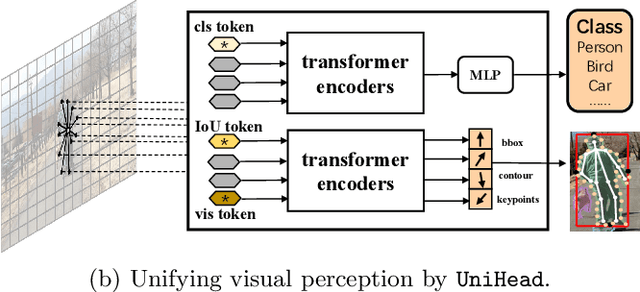
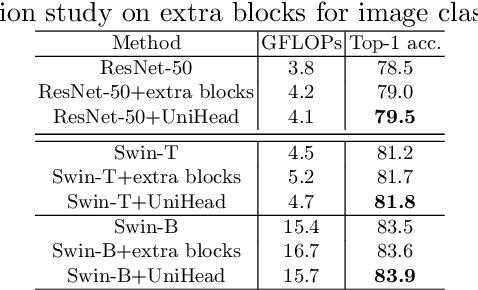

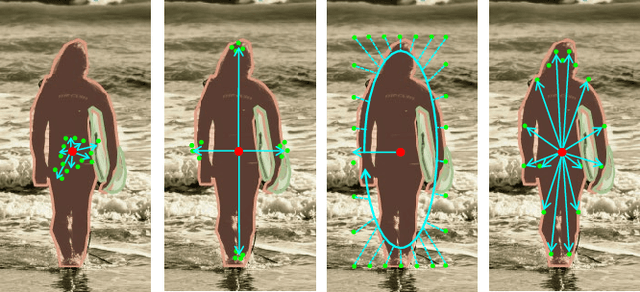
Abstract:We present a conceptually simple, flexible, and universal visual perception head for variant visual tasks, e.g., classification, object detection, instance segmentation and pose estimation, and different frameworks, such as one-stage or two-stage pipelines. Our approach effectively identifies an object in an image while simultaneously generating a high-quality bounding box or contour-based segmentation mask or set of keypoints. The method, called UniHead, views different visual perception tasks as the dispersible points learning via the transformer encoder architecture. Given a fixed spatial coordinate, UniHead adaptively scatters it to different spatial points and reasons about their relations by transformer encoder. It directly outputs the final set of predictions in the form of multiple points, allowing us to perform different visual tasks in different frameworks with the same head design. We show extensive evaluations on ImageNet classification and all three tracks of the COCO suite of challenges, including object detection, instance segmentation and pose estimation. Without bells and whistles, UniHead can unify these visual tasks via a single visual head design and achieve comparable performance compared to expert models developed for each task.We hope our simple and universal UniHead will serve as a solid baseline and help promote universal visual perception research. Code and models are available at https://github.com/Sense-X/UniHead.
DiRA: Discriminative, Restorative, and Adversarial Learning for Self-supervised Medical Image Analysis
Apr 21, 2022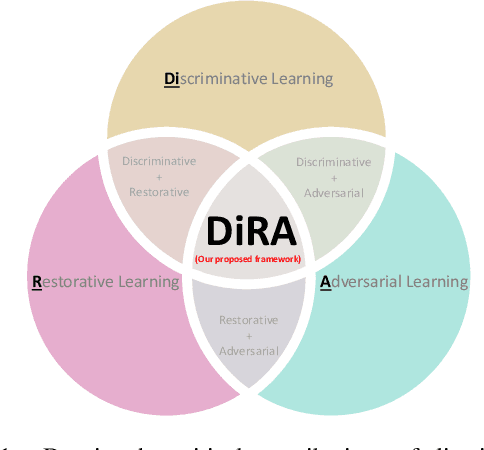

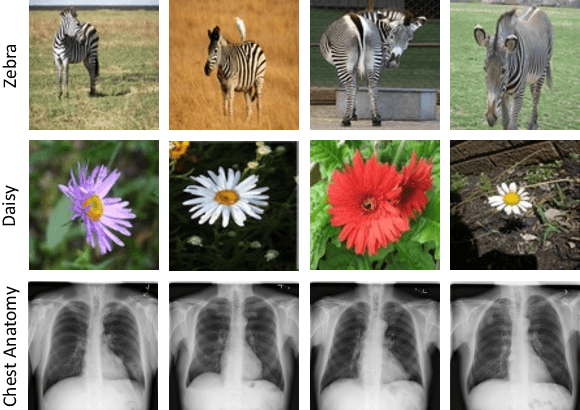

Abstract:Discriminative learning, restorative learning, and adversarial learning have proven beneficial for self-supervised learning schemes in computer vision and medical imaging. Existing efforts, however, omit their synergistic effects on each other in a ternary setup, which, we envision, can significantly benefit deep semantic representation learning. To realize this vision, we have developed DiRA, the first framework that unites discriminative, restorative, and adversarial learning in a unified manner to collaboratively glean complementary visual information from unlabeled medical images for fine-grained semantic representation learning. Our extensive experiments demonstrate that DiRA (1) encourages collaborative learning among three learning ingredients, resulting in more generalizable representation across organs, diseases, and modalities; (2) outperforms fully supervised ImageNet models and increases robustness in small data regimes, reducing annotation cost across multiple medical imaging applications; (3) learns fine-grained semantic representation, facilitating accurate lesion localization with only image-level annotation; and (4) enhances state-of-the-art restorative approaches, revealing that DiRA is a general mechanism for united representation learning. All code and pre-trained models are available at https: //github.com/JLiangLab/DiRA.
CAiD: Context-Aware Instance Discrimination for Self-supervised Learning in Medical Imaging
Apr 15, 2022

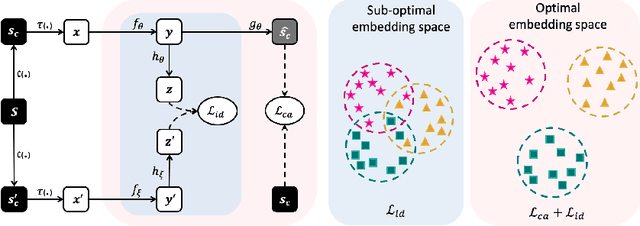

Abstract:Recently, self-supervised instance discrimination methods have achieved significant success in learning visual representations from unlabeled photographic images. However, given the marked differences between photographic and medical images, the efficacy of instance-based objectives, focusing on learning the most discriminative global features in the image (i.e., wheels in bicycle), remains unknown in medical imaging. Our preliminary analysis showed that high global similarity of medical images in terms of anatomy hampers instance discrimination methods for capturing a set of distinct features, negatively impacting their performance on medical downstream tasks. To alleviate this limitation, we have developed a simple yet effective self-supervised framework, called Context-Aware instance Discrimination (CAiD). CAiD aims to improve instance discrimination learning by providing finer and more discriminative information encoded from a diverse local context of unlabeled medical images. We conduct a systematic analysis to investigate the utility of the learned features from a three-pronged perspective: (i) generalizability and transferability, (ii) separability in the embedding space, and (iii) reusability. Our extensive experiments demonstrate that CAiD (1) enriches representations learned from existing instance discrimination methods; (2) delivers more discriminative features by adequately capturing finer contextual information from individual medial images; and (3) improves reusability of low/mid-level features compared to standard instance discriminative methods. As open science, all codes and pre-trained models are available on our GitHub page: https://github.com/JLiangLab/CAiD.
Seeking an Optimal Approach for Computer-Aided Pulmonary Embolism Detection
Sep 15, 2021

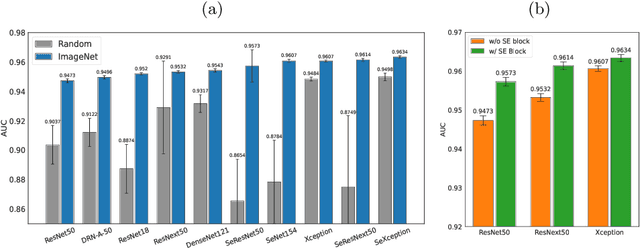

Abstract:Pulmonary embolism (PE) represents a thrombus ("blood clot"), usually originating from a lower extremity vein, that travels to the blood vessels in the lung, causing vascular obstruction and in some patients, death. This disorder is commonly diagnosed using CT pulmonary angiography (CTPA). Deep learning holds great promise for the computer-aided CTPA diagnosis (CAD) of PE. However, numerous competing methods for a given task in the deep learning literature exist, causing great confusion regarding the development of a CAD PE system. To address this confusion, we present a comprehensive analysis of competing deep learning methods applicable to PE diagnosis using CTPA at the both image and exam levels. At the image level, we compare convolutional neural networks (CNNs) with vision transformers, and contrast self-supervised learning (SSL) with supervised learning, followed by an evaluation of transfer learning compared with training from scratch. At the exam level, we focus on comparing conventional classification (CC) with multiple instance learning (MIL). Our extensive experiments consistently show: (1) transfer learning consistently boosts performance despite differences between natural images and CT scans, (2) transfer learning with SSL surpasses its supervised counterparts; (3) CNNs outperform vision transformers, which otherwise show satisfactory performance; and (4) CC is, surprisingly, superior to MIL. Compared with the state of the art, our optimal approach provides an AUC gain of 0.2\% and 1.05\% for image-level and exam-level, respectively.
 Add to Chrome
Add to Chrome Add to Firefox
Add to Firefox Add to Edge
Add to Edge